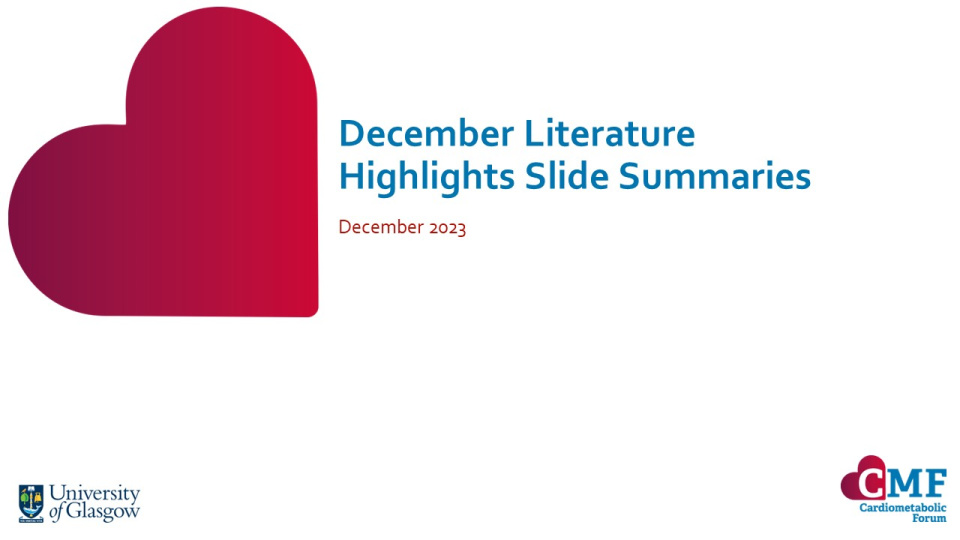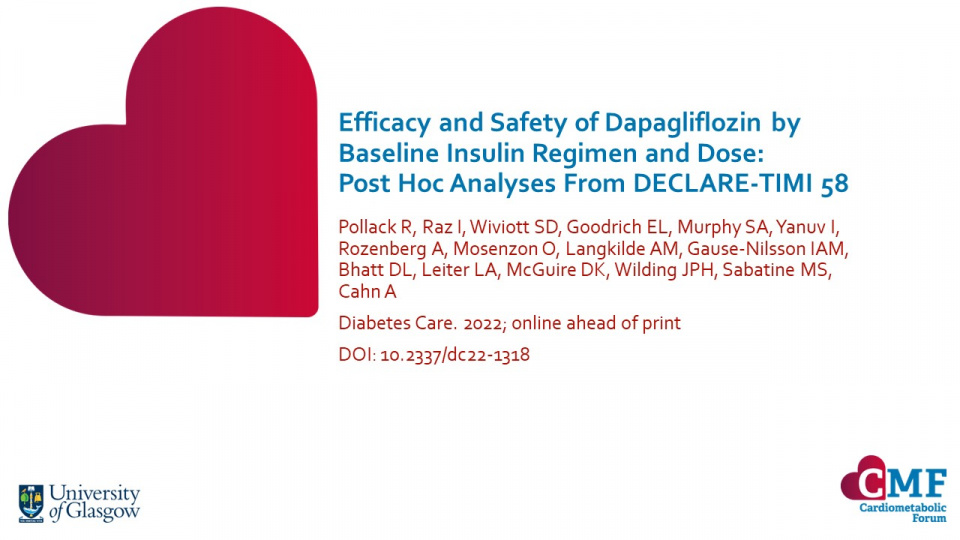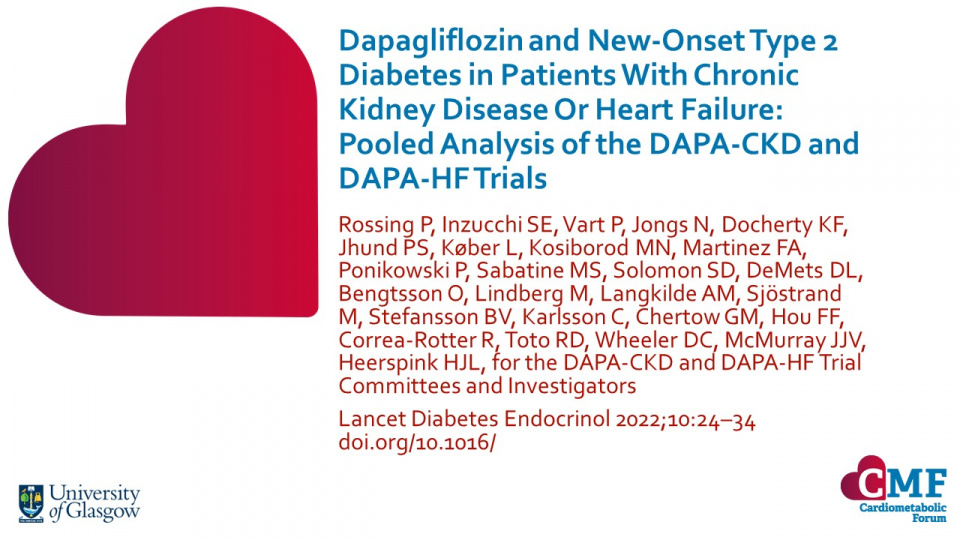Publications
Stay up to date with our literature reviews which are curated by experts to feature the most important publications released each month. Explore our publications for access to concise summary slides for your own use.
Efficacy and Safety of Dapagliflozin by Baseline Insulin Regimen and Dose: Post Hoc Analyses From DECLARE-TIMI 58
Diabetes Care. 2022; online ahead of print DOI: 10.2337/dc22-1318
Limited data exist regarding the cardiorenal efficacy and safety of SGLT2i in patients treated with intensive insulin regimens including short-acting insulin or high insulin doses. This post hoc analysis of DECLARE-TIMI 58 examined the effects of dapagliflozin vs placebo among 7,013 insulin users at baseline, of whom 4,650 were on regimens that included short-acting insulin and 1,339 were receiving insulin >1 IU/kg.
Keywords:
Dapagliflozin and New-Onset Type 2 Diabetes in Patients With Chronic Kidney Disease Or Heart Failure: Pooled Analysis of the DAPA-CKD and DAPA-HF Trials
Lancet Diabetes Endocrinol 2022;10:24–34 doi.org/10.1016/
Chronic kidney disease and heart failure are insulin resistant states associated with high incidence rates of diabetes. Rossing et al. carried out a two Phase 3, randomised, double-blind, placebo-controlled trials assessed the effect of dapagliflozin on new-onset type 2 diabetes, in a pooled analysis of data from 6,608 individuals.



